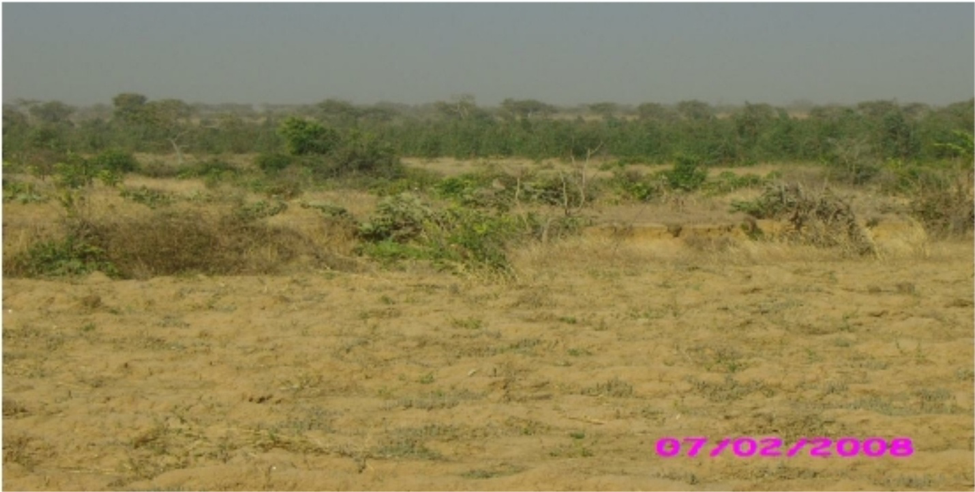Agroforestry: An Innovative and Sustainable Approach to Restoring the Vast Degraded Landscape Areas Lost under Fuelwood Sourcing and Intensive Agricultural Expansion in Giwa Region of Nigeria
CEESP News - by Bala Ibrahim Girku 1, Kaltho Kharbal James 2 and Bartholomew C. Ekwereo 3
1Researcher, Bachelor of Urban and Regional Planning, 2Master of Landscape Architecture, 3Lecturer, Department of Architecture, Faculty of Environmental Design, A.B.U Zaria, Nigeria

Photo: Bala Ibrahim Girku
Introduction
In 2008, we’ve observed that forest loss and degradation have been occurring unabated in Giwa region (located between latitude 10095’00” and 11020’00” North and between longitude 7007’05” and 7037’05” East and covers a total land area of 4,098.72Km2in Nigeria) at higher rates, resulting in the expansion of agricultural and pasture areas that are often bared and exposed to the elements of weather. A combination of technological innovations, sound land management policies, adoption of more efficient land use practices, and changes in consumption patterns holds the potential to affect the supply and demand for wood and agricultural products, and to promote a global restoration of forests.
( Meyfroidt and Lambin, 2011), and MEA (2005) asserts that agricultural land is expanding in approximately about 70% of countries it revealed that the impact of agricultural expansion has been severe in tropical forest regions in which Northern Nigeria falls under, where pasture and crop land is expected to continue to increase over the next 30 to 50 years. This will results in the increasing of food production seen in the last several decades, and that intensification can as well lead to more deforestation in some circumstances. As in the case of Giwa region and Northern Nigeria in general, the effect is already alarming up north and rapidly descending to the north central. This was observed to be characterized by bared kilometres of vast un-vegetated land that are not supportive to agricultural production to those of low yield. These vast expanse of land were previously forested, but the high demand for agricultural land posed by increase in population, need for energy (fuelwood), and food, had led to intensified farming practices that had exposed the soil to the direct impacts of weather elements which had reduced the land capacity to the barest minimal. However, as a result of such practices and land management, climate change will likely increase its role as a key underlying driver, causing shifts in land use in response to ecosystem change (HLPE, 2012). However, what strategies can be used in regenerating the vast degraded landscape and the land for symbiotic functions?
Results and Discussion
The demand for energy had been found to be the major reason behind fuelwood sourcing in the study area, both in the fields or farms and in the established forests. This was found to result in indirect land use changes (ILUC) currently affecting the area. Reason for the ILUC from forests to agricultural and pasture uses due to the inability of the government to carry reforestation of the areas affected within the resources as a result of fuelwood sourcing. Also, the rapid disappearing of few trees standing in the fields coupled with intensive farming practices was found to be causing ILUC from arable to waste land, through soil exhaustion which often leads to desert conditions.
These unsustainable practices results in turning the land into barren parcels with little use for agriculture and as time pass -by, some places are gradually acquiring desert type conditions. The consequences of these dimension of challenges has drop down the productivity capacity of the land. It therefore, means that for agricultural productivity to become sustainable in the region, we must adopts a sustainable best land management practices that is economically, and ecologically viable and socially acceptable to the farmers.
Recommendations
We therefore recommends the adoption of Faidherbia albida as the best flora species that has a history in regenerating forest cover within fields for the purpose of restoring loss soil fertility and reintroduction of soil organic matter in Giwa region and northern Nigeria in general . Faidherbia albida is widely distributed throughout the dry zones of tropical Africa that can be used as a component of the traditional farming system (mixed cereal, and livestock) in Northern Nigeria. In this high-potential cereal zone of western Africa, the species has the unique characteristic of shedding its foliage at the start of the rainy season, and of coming into leaf in the dry season which makes it an ideal agroforestry tree for use in combination with crops.
Key words: Agro-Silvo-pastoral, restoring the degraded landscape, Fidherbia albida, forest, indirect land use changes.
References
HLPE , (2012). Climate Change and Food Security. A report by the High Level Panel of Experts
on Food Security and Nutrition of the Committee on World Food Security, Rome 2012.
Lambin E., Meyfroidt P., (2011). Global Land use Change, Economic Globalization , and the
Looming Land Scarcity. PNAS 108 (9): 3465–3472.
(MEA) Millennium Ecosystem Assessment, (2005). Ecosystem and Human Well-Being: Policy
Responses. Vol.3, Ch.8. Island Press, Washington, DC
